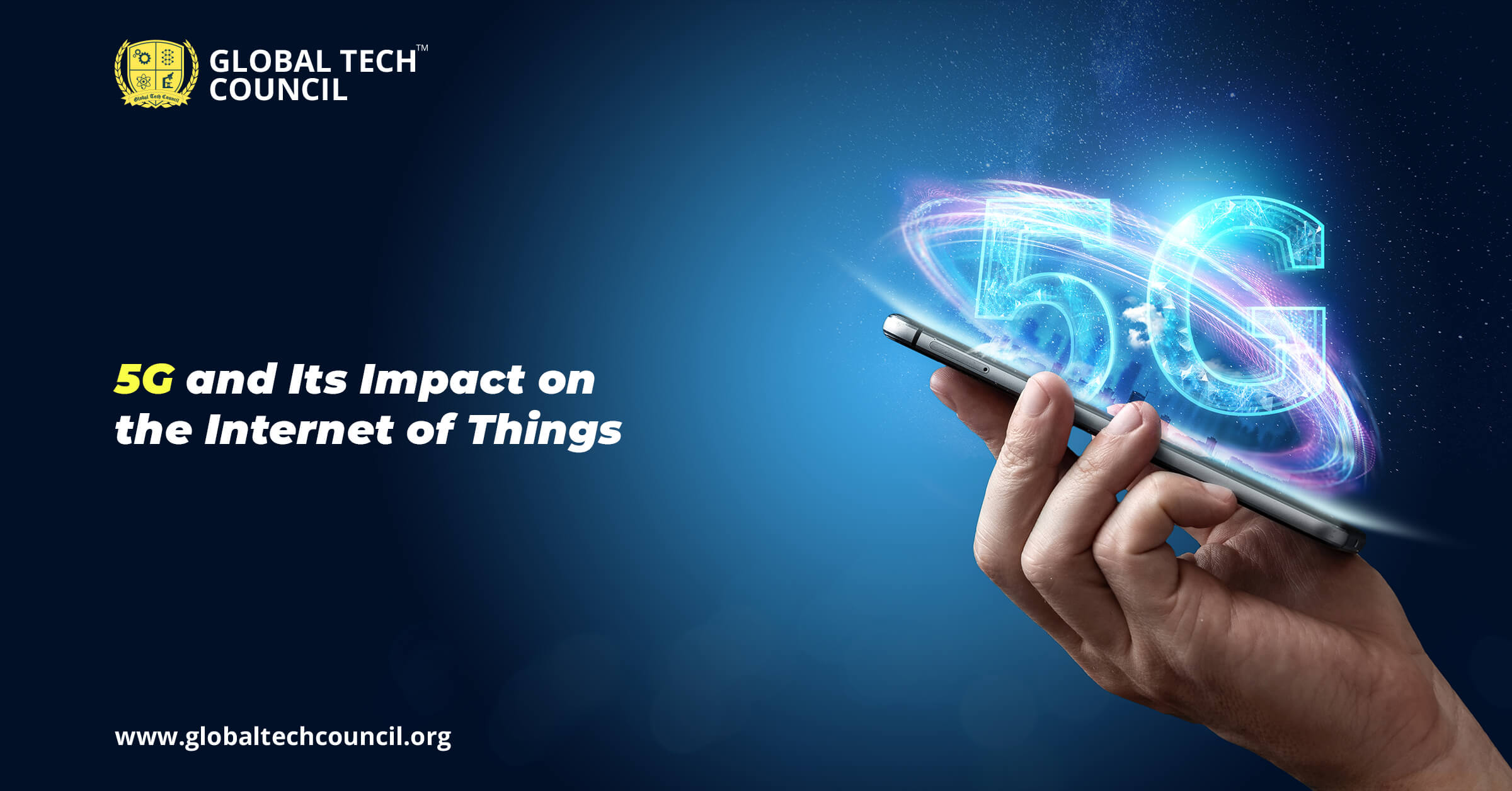
Wondering what is the role of 5G on the Internet of Things? Well, you have landed on the right page. This article talks about what 5G means for IoT.
Table of Contents
- Overview
- What does 5G mean for IoT?
- Concluding Lines
Overview
We all know, the internet of things, also generally known as IoT, is a booming field that has the potential to boost even more with the help of 5G cellular technology, as it is going to enable much more far-reaching connectivity. In fact, it is unleashing a massive IoT ecosystem where networks can serve billions of connected devices while maintaining desired bandwidth, latency, and cost trade-offs. In other words, we can say that the combination of IoT with 5G is a game-changer that no one ever imagined.
Are you looking for an IoT online certification course to become an IoT Expert? Get started today with Global Tech Council.
What does 5G mean for IoT?
Before understanding what 5G technology means to IoT, here it is important to know that IoT success is tied to its performance, which depends on how quickly it can communicate with other IoT devices and smartphones.
Higher Data-Transfer Speeds
5G is excellent news for the IoT market. This is because 5G enables faster, extra stable, and more secure connectivity that is advancing almost everything. 5G technology has the potential to improve the speed and reliability of these connected devices significantly. Thus, it can help smart devices such as smart homes, smart lights, smart cities, smartphones, and others to communicate and share data with each other with higher data-transfer speeds than ever.
Control More Devices Remotely
Not only this, but 5G technology will also enable people to control more devices remotely, especially in those areas where real-time network performance is critical. For instance, technology can help in remote control of heavy machinery in dangerous environments, which helps in improving worker safety and remote operation.
Greater Network Reliability and Stable Connections
Apart from providing better speeds, 5G technology offers the ability to operate more reliably, thus creating more stable connections, which are essential, especially for devices that require real-time updates such as locks, security cameras, and other monitoring systems. Thus 5G’s greater reliability, high-speed connectivity, very low latency, and greater coverage is the next-generation network for the IoT ecosystem.
Now, as we have understood the significance of 5G in IoT, let’s explore how the integration of 5G and IoT can help the supply chain and self-driving.
Supply Chains
By utilizing IoT devices, factories and warehouses are now using real-time monitoring for quality management and to monitor components, goods, and machinery during the whole process. 5G guarantees the opportunity to monitor a product from production to end-user in real-time, without having to check it in or out, and with the seller being notified when a product is shipped and when lost in the mail. Supply chain integration can lower costs, improve customer service and experience, reduce inventory failure in transit and enhance the overall process.
Self-Driving
5G with IoT enables vehicles to communicate with one another and with their surroundings, lowering the risk of collisions and making for much more reliable traffic patterns. By combining both of these factors, traffic jams will be reduced, travel times will be shortened, and electricity will be saved by minimizing the number of times cars would idle at red lights or stand in lines.
Vehicles could also keep track of the state of their oil or brakes, alerting the driver and linking them directly to the repair shop of their choice. Furthermore, self-driving vehicles could collect and send data to their suppliers, which could be used to refine the needed designs.
Please note that 5G offers a number of advantages not present in other systems. The ability of 5G to accommodate a large variety of static and mobile IoT devices with a wide range of speed, bandwidth, and quality of service requirements is one of them. The versatility of 5G will become much more essential for businesses as the Internet of Things expands. Essential communications will be supported by 5G, which will have much more stringent efficiency criteria. Self-driving vehicles, smart energy grids, improved factory automation, and other innovative technologies will all benefit from 5G’s ultra-reliability and low latency.
Concluding Lines
With connectivity at the center of industrial transition, 5G can play a critical role not only in the advancement of communication but also in the evolution of companies and culture. Technicians will need to do more than simply evolve networks to prepare for 5G; they will need to adapt their businesses to take advantage of such emerging opportunities for efficient operations.
If the domain of IoT interests you, you can get enrolled in IoT certification course and become a Certified IoT Expert!